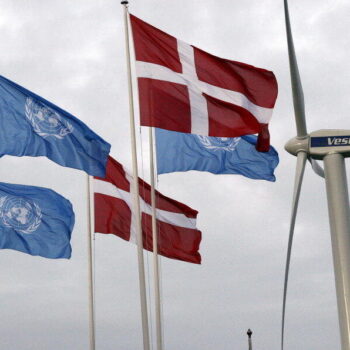The world needs to cut its carbon emissions by 7.6% annually each year between 2020 and 2030 to achieve global climate objectives. Yet, in 2020, when the coronavirus pandemic forced the world to a grinding halt, emissions fell only 7%.
In April, as part of America’s updated Paris climate pledge, President Biden announced a new target: a 50-52% reduction in greenhouse gas emissions from 2005 levels by 2030. However, some experts say this is insufficient to bring domestic emissions in line with what is needed to achieve global climate objectives, such as limiting warming to 1.5C.
To achieve the 50% reduction in emissions Biden promised in April, the US will need to deploy a significant amount of clean energy technology. Where will all of it come from? Does the current trade regime support the achievement of America’s climate objectives or impede them?
China controls the supply chains for most of the rare earth elements (REE) and critical minerals used in batteries, magnets, and other components important to clean energy technology. In 2019, 60% of the worlds REE were extracted from China compared to only 13% in the US. China also dominates critical minerals processing, having produced 87% of the world’s REEs, 65% of cobalt, 58% of lithium, 40% of copper, and 35% of nickel. By comparison, the US produced zero.
America is also heavily reliant on China for the manufacturing of clean energy technology, such as wind turbines and solar panels. China is home to seven of the world’s top 10 wind turbine manufacturers, whereas the US is home to just one. In 2020, the top seven Chinese manufacturers contributed 65% of the new global wind power infrastructure. Meanwhile, the US manufacturer, GE, accounted for only 14%.
When it comes to solar technology, the contrast is starker. China produces more than 80% of polysilicon used in solar panels worldwide. In 2004, China had one company in the top ten and the US had four. Fast forward to 2020: there are five Chinese companies amongst the top six largest polysilicon producers, and the sixth-largest is not American, rather a German company, Wacker Chemie. China dominates the production of solar panels. Today, China produces roughly 72% of the world’s solar panels, compared to US manufacturers which produce just 1%. Twenty years ago, US companies manufactured 22% of the world total.
Not only is the US dependent on China for essential equipment, but Chinese manufacturing is also carbon-intensive. For example, building and erecting wind turbines requires hundreds of tons of steel, which requires the combustion of coal in blast furnaces. Solar panels aren’t much cleaner. Polysilicon is produced through an energy-intensive process. This process requires a lot of electricity, often reliant on large quantities of cheap coal, which makes Chinese electricity roughly twice as carbon-intensive as US electricity.
If the US can manufacture essential technology with fewer emissions than China, it may help the world achieve its 1.5C target. President Biden, moreover, has made reshoring well-paying clean energy manufacturing jobs central to his American Jobs Plan. But reshoring raises at least six important questions:
- Will the highly automated processes used for manufacturing clean energy technology produce many American jobs?
- How long will it take to develop the domestic capabilities needed to manufacture at scale?
- Can the US produce the clean technology at a competitive price, or will domestic manufacturers require protection?
- Will China continue to trade technologies with the US during the transition, knowing that the intent is eventually to lock them out?
- Will increased manufacturing make it more difficult for the US to reach its carbon emissions targets?
- Could reshoring lead to fragmented production systems and slow the adoption of clean energy technology?
Reshoring is popular because it suggests the US might achieve its climate goals while generating good jobs. If enough jobs could be created, perhaps political support for achieving global climate objectives would increase. This optimistic scenario may be elusive, however.
As if the climate challenge were not complex enough, it is intertwined with the troubled US-China trade relationship. China controls the critical supply chains needed for manufacturing clean technology, and therefore the clean energy market. It will take time and federal incentives, which in the current US political climate may prove difficult, to re-shore clean energy manufacturing. If Sino-American tension continues to escalate, China could choose to make reshoring even more difficult.
***
This is the first in a new E3G blog series examining the EU-US-China dynamics on issues relating to trade and climate, the energy transition, climate finance, development, multilateralism, among others. In future articles on US trade and climate, E3G will attempt to address the questions posed above and identify equivalents for an EU audience.


